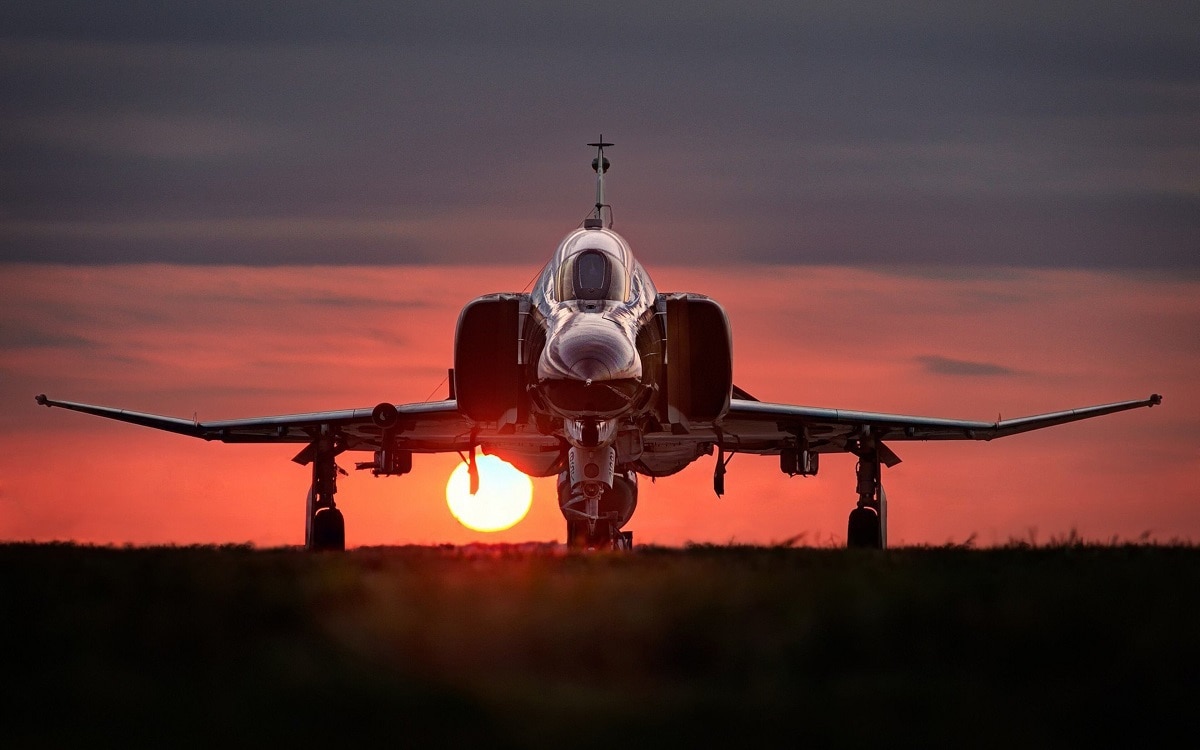The F-4 Phantom II aircraft built its fame in Vietnam, bolstering it later in Iraq, in 1991, during Operation Desert Storm. During these wars, the aircraft notched as many as 280 air-to-air victories and eliminated more than 200 anti-aircraft sites.
Before it was retired from U.S. military service in 1996, the aircraft proved itself combat-worthy over a period of many decades. It first took to the sky as far back as 1958, according to an essay from Boeing. Into the late 1990s, the aircraft continued to support allied countries including Australia, Egypt, Germany, Great Britain, Greece, Iran, Israel, Japan, South Korea, Spain, and Turkey. The Phantom II began life as a Navy jet but evolved into key ground-attack roles supporting Marines in firefights.
“The aircraft flew every traditional military mission: air superiority, close air support, interception, air defense suppression, long-range strike, fleet defense, attack and reconnaissance,” according to Boeing.
There were several variants and modernization efforts pursued with the F-4 Phantom over the years, according to Joe Baugher.
The first variant was the F-4J, a model powered by J79-GE-10 engines able to generate 17,900 pounds of afterburning thrust. The engines, Baugher explains, were heavy and generated a need for stronger landing-gear with larger mainwheels.
“In order to accommodate these larger mainwheels, the upper and lower surfaces of the inner wing had to be bulged outward like those on the USAF F-4C. An additional fuel cell was fitted in the rear fuselage to bring internal fuel capacity to 1998 gallons,” Baugher writes.
As the aircraft further evolved, the F-4J was equipped with an upgraded bombing system, which added key ground attack improvements and the ability to release nuclear weapons at all altitudes.
“The F-4J was also equipped with the AN/AWG-10 fire control system housed in an enlarged radome. This set used an AN/APG-59 pulse-Doppler radar in place of the earlier APQ-72. This new radar was designed to detect and track low-lying aircraft and to distinguish them from sea/ground returns,” Baugher explains.
Looking at its history, it seems likely the combat success of the F-4 influenced the emergence of the F-15 and carrier-launched planes such as the F/A-18. Interestingly, the F-4 appears to have taken on a wide range of roles, including ground-attack, air-to-air combat, and carrier-launched bombing missions.
Kris Osborn is the Military Affairs Editor of 19FortyFive and President of Warrior Maven – Center for Military Modernization. Osborn previously served at the Pentagon as a Highly Qualified Expert with the Office of the Assistant Secretary of the Army—Acquisition, Logistics & Technology. Osborn has also worked as an anchor and on-air military specialist at national TV networks. He has appeared as a guest military expert on Fox News, MSNBC, The Military Channel, and The History Channel. He also has a Masters Degree in Comparative Literature from Columbia University.

